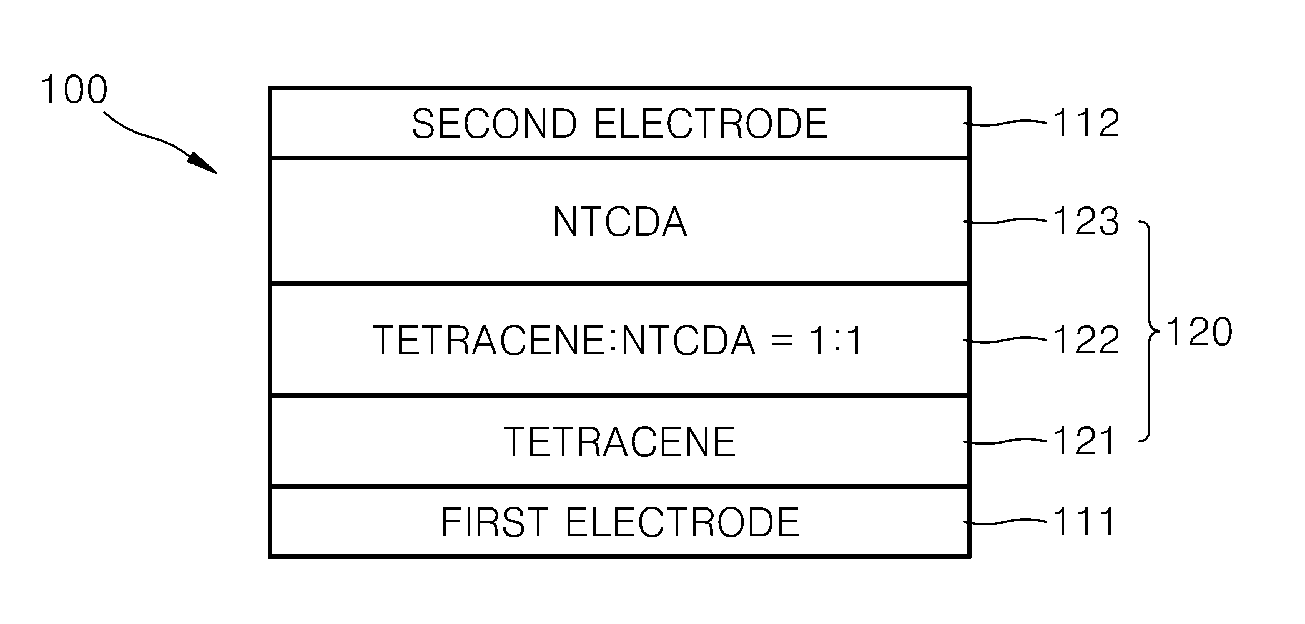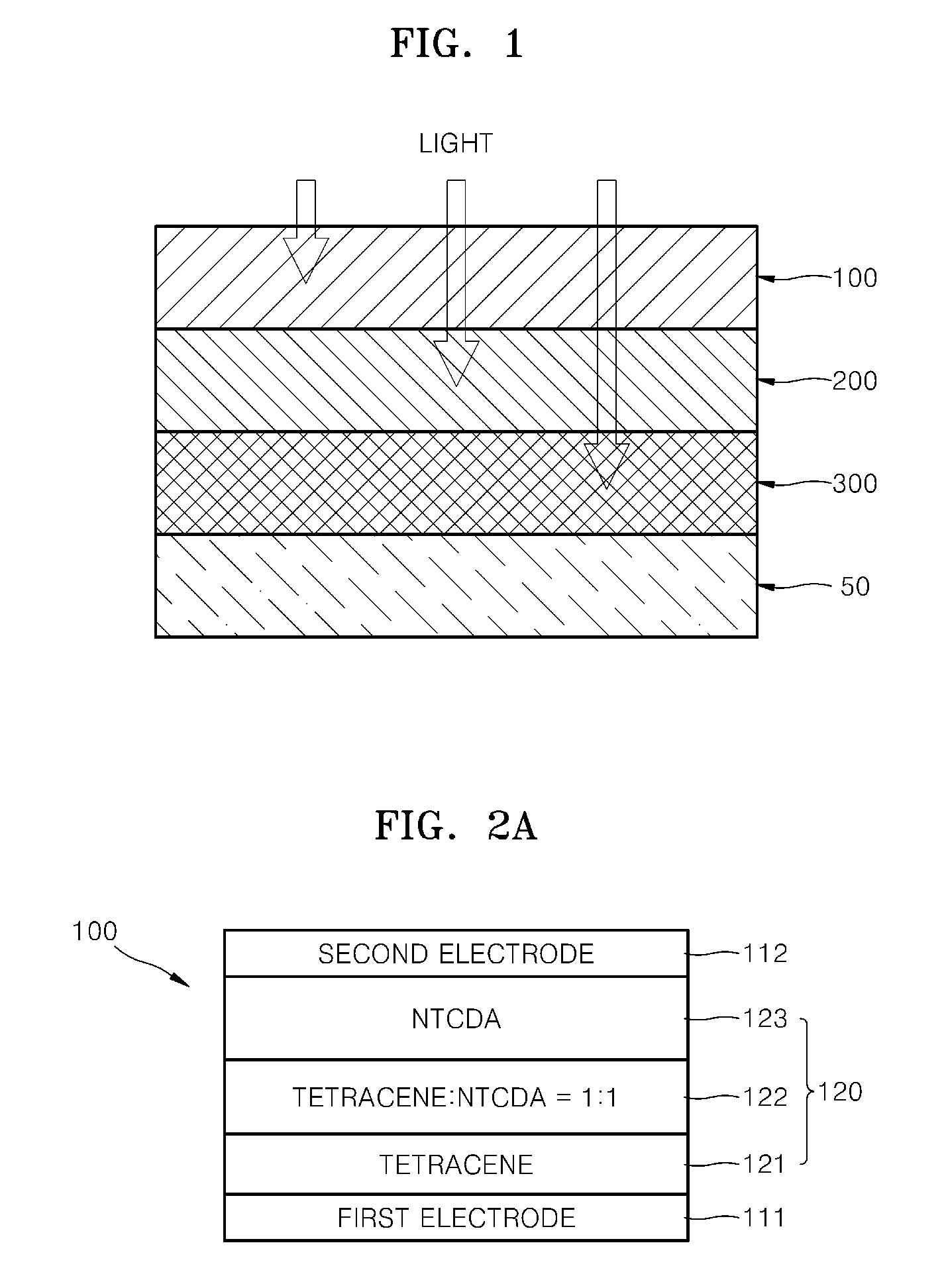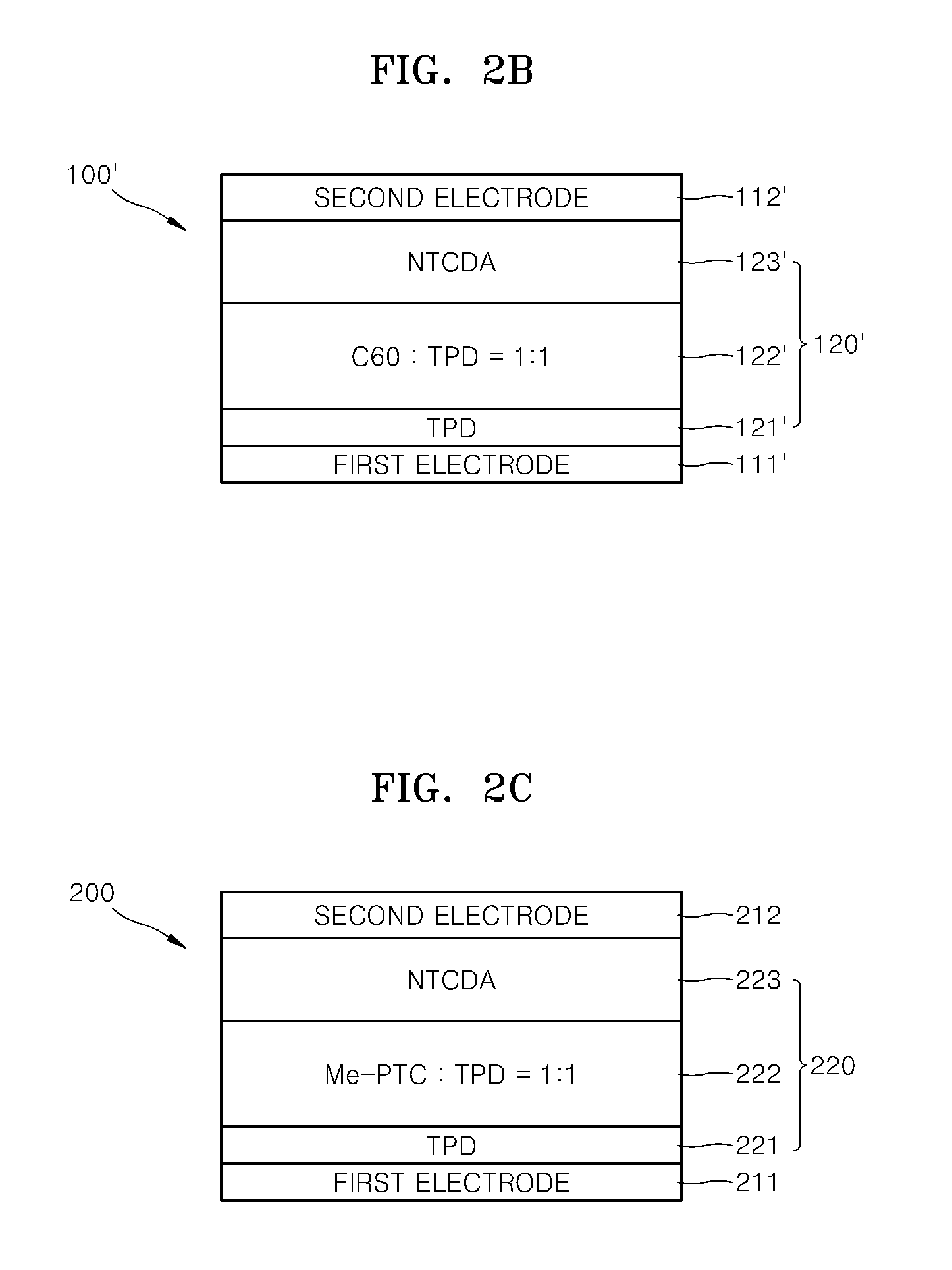Photoelectric conversion film, photoelectric conversion device and color image sensor having the photoelectric conversion device
a conversion device and photoelectric technology, applied in thermoelectric devices, radiation controlled devices, nanoinformatics, etc., can solve the problems of low sensitivity reduced performance of light receiving devices, false color phenomena, etc., to increase the number of pixels, improve definition, and increase the external quantum efficiency
- Summary
- Abstract
- Description
- Claims
- Application Information
AI Technical Summary
Benefits of technology
Problems solved by technology
Method used
Image
Examples
example 1
Manufacture of the First Blue Color Photoelectric Conversion Device 100 Illustrated in FIG. 2A
[0058]Tetracene is deposited on a glass substrate, on which an ITO electrode (the first electrode 111) is disposed, to a thickness of 30 nm, to form the p-type layer 121. Then, tetracene and NTCDA are co-deposited on the p-type layer 121 to a thickness of 100 nm to form the p,n-type layer 122. Then, NTCDA is deposited on the p,n-type layer 122 to a thickness of 250 nm to form the n-type layer 123. Then, an Ag electrode (the second electrode 112) is disposed on the n-type layer 123 with a thickness of 20 nm. The glass substrate, on which the ITO electrode is disposed, is cleaned using water, ultrasonic waves, methanol and acetone. The cleaned glass substrate is then O2 plasma processed. Then, a thermal evaporator is used to sequentially deposit organic materials on the ITO electrode disposed on the O2 plasma processed glass substrate under a pressure of 1×10−5 torr at a deposition speed of 2...
example 2
Manufacture of the Second Blue Color Photoelectric Conversion Device 100′ Illustrated in FIG. 2B
[0059]The second blue color photoelectric conversion device 100′ is manufactured in the same manner as in Example 1, except that TPD is deposited to form the p-type layer 121′, TPD and C60 are co-deposited to form the p,n-type layer 122′ and NTCDA is deposited to form the n-type layer 123′.
example 3
Manufacture of the Green Color Photoelectric Conversion Device 200 Illustrated in FIG. 2C
[0060]The green color photoelectric conversion device 200 is manufactured in the same manner as in Example 1, except that TPD is deposited to form the p-type layer 221, TPD and Me-PTC are co-deposited to form the p,n-type layer 222 and NTCDA is deposited to form the n-type layer 223.
[0061]Electrical Characteristics Measurement
[0062]An electrometer (Keithley model 485) is used to measure electrical characteristics of the photoelectric conversion devices manufactured as in Examples 1 through 3 under a pressure of 1×10−5 torr and the results are shown in FIGS. 3A through 3C. A xenon lamp and a monochrometer are used to provide monochromatic light and a function generator (Hokudo Denko, Ltd., HB-104) is used. FIGS. 3A through 3C are graphs showing external quantum yields (“External QE”) of the photoelectric conversion devices manufactured as in Examples 1 through 3. More specifically, FIG. 3A is a g...
PUM
 Login to View More
Login to View More Abstract
Description
Claims
Application Information
 Login to View More
Login to View More - R&D
- Intellectual Property
- Life Sciences
- Materials
- Tech Scout
- Unparalleled Data Quality
- Higher Quality Content
- 60% Fewer Hallucinations
Browse by: Latest US Patents, China's latest patents, Technical Efficacy Thesaurus, Application Domain, Technology Topic, Popular Technical Reports.
© 2025 PatSnap. All rights reserved.Legal|Privacy policy|Modern Slavery Act Transparency Statement|Sitemap|About US| Contact US: help@patsnap.com



